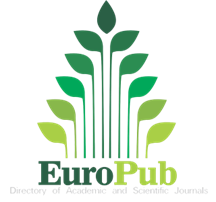Assessment of Glycated Hemoglobin (HbA1c) and Serum Fructosamine as Predictors of Microvascular Complications in Type 2 Diabetes Mellitus
HbA1c and Fructosamine as Microvascular Complication Predictors
DOI:
https://doi.org/10.69750/dmls.02.07.0133Keywords:
Type 2 diabetes mellitus, HbA1c, fructosamine, microvascular complications, retinopathy, nephropathy, neuropathyAbstract
Background: Microvascular complications such as retinopathy, nephropathy, and neuropathy are major causes of morbidity in type 2 diabetes mellitus (T2DM). Glycated hemoglobin (HbA1c) is the standard marker for long-term glycemic control, whereas serum fructosamine reflects short-term fluctuations. Their comparative predictive value for complications remains under evaluation.
Objective: To assess and compare the prognostic value of fructosamine and HbA1c in detecting microvascular complications among T2DM patients.
Methods: This multicenter cross-sectional study was conducted from February 2024 to February 2025 in tertiary care hospitals across Pakistan. One hundred patients with ≥5 years of T2DM were enrolled. HbA1c was measured by high-performance liquid chromatography and fructosamine by nitroblue tetrazolium assay. Neuropathy was assessed clinically and with nerve conduction studies where indicated; retinopathy by dilated fundus examination; and nephropathy by urine albumin-to-creatinine ratio and eGFR. ROC curve analysis, logistic regression, and correlation were performed.
Results: Mean age was 55.2 ± 8.6 years; mean diabetes duration 10.1 ± 4.3 years. Retinopathy, nephropathy, and neuropathy were present in 42%, 36%, and 49% of patients, respectively. Fructosamine was significantly associated with neuropathy (348.7 vs 294.3 µmol/L, p < 0.01), while HbA1c was higher in retinopathy (9.1% vs 7.5%, p < 0.001) and nephropathy (8.9% vs 7.7%, p < 0.01). ROC analysis showed fructosamine better predicted neuropathy (AUC 0.76), HbA1c predicted retinopathy (AUC 0.83) and nephropathy (AUC 0.80). Combined use improved diagnostic accuracy (AUC 0.87).
Conclusion: Fructosamine adds predictive value for neuropathy, while HbA1c remains superior for retinopathy and nephropathy. Their combined assessment enhances identification of T2DM patients at risk of microvascular complications.
Downloads
References
Guo W, Zhou Q, Jia Y, Xu J, Han Q, Guo Z, et al. Glycated albumin is associated with diabetic retinopathy in type 2 diabetes mellitus. Diabetes Res Clin Pract. 2018; 141:159–66. doi: 10.1016/j.diabres. 2018.04.042.
Qiu S, Cai X, Chen X, Sun Z, Zügel M, Steinacker JM, et al. Long-term glycemic variability and risk of microvascular complications in type 2 diabetes: a systematic review and meta-analysis. Diabetes Res Clin Pract. 2019; 148:23–31. doi: 10.1016/j.diabres.2 018.12.005.
Lim S, Kim KM, Moon JH, Choi SH, Park KS, Jang HC, et al. Association of variability in hemoglobin A1c with microvascular complications of diabetes: a 9-year prospective cohort study. Diabetes Metab J. 2019;43(6):830–42. doi:10.4093/dmj.2019.0042.
Selvin E, Lazo M, Chen Y, Shen Y, Astor BC, Coresh J, et al. Variability in hemoglobin A1c and risk of microvascular complications in type 2 diabetes: the Atherosclerosis Risk in Communities (ARIC) study. Diabetes Care. 2019;42(6):1107–14. doi:10.2337/dc18-2407.
Tang Y, Xu Z, Tang H, Yang Y, Zhu W, Fang Y, et al. Fructosamine and glycated albumin are associated with diabetic neuropathy in type 2 diabetes. J Diabetes Complications. 2020;34(6):107558. doi:10.1016/j.jdiacomp.2020.107558.
Ryu J, Lee BW, Kang ES, Ahn CW, Cha BS, Lee HC. Association of glycemic variability with diabetic microvascular complications in type 2 diabetes: a cross-sectional study. Medicine (Baltimore). 2021;100(31):e26877. doi:10.1097/MD.0000000000026877.
Wang L, Chen S, Xu W, Yang J, Guo L, Tang Y, et al. Short-term glycemic variability and its association with diabetic neuropathy assessed by glycated albumin in type 2 diabetes. J Diabetes Investig. 2021;12(5):828–36. doi:10.1111/jdi.13393.
Kim KJ, Lee BW. The roles of glycated hemoglobin, glycated albumin, and fructosamine in the prediction of vascular complications in diabetes. Curr Opin Endocrinol Diabetes Obes. 2021;28(4):362–70. doi:10.1097/MED.0000000000000666.
International Diabetes Federation. IDF Diabetes Atlas, 10th edition. Brussels: IDF; 2021. Available from: https://diabetesatlas.org.
Wu H, Chen C, Hsieh H, Lin Y, Chang T. Comparative predictive values of HbA1c and fructosamine for microvascular complications in type 2 diabetes: a multicenter analysis. Diabet Med. 2022;39(10):e14874. doi:10.1111/dme.14874.
Zhao X, Chen J, Guo W, Luo X, Yang M, Xu H, et al. Comparative effectiveness of HbA1c and glycated albumin for prediction of diabetic retinopathy: a meta-analysis of observational studies. Front Endocrinol (Lausanne). 2022;13:863928. doi:10.3389/fendo.2022.863928.
Khan S, Javed Z, Ali A, Khurshid H, Azhar A, Ejaz S, et al. Diabetes care in Pakistan: challenges, progress, and future prospects. Lancet Diabetes Endocrinol. 2022;10(8):558–72. doi:10.1016/S2213-8587(22)00111-7.
Zhou J, Huang Y, Sun J, Wang Y, Zhang L, Chen S, et al. Serum glycated albumin as a predictor of progression of diabetic nephropathy in type 2 diabetes. Front Endocrinol (Lausanne). 2022;13:976345. doi:10.3389/fendo.2022.976345.
American Diabetes Association. Standards of Medical Care in Diabetes—2023. Diabetes Care. 2023;46(Suppl 1):S1–154. doi:10.2337/dc23-SINT.
Wang Y, Sun J, Huang Y, Zhou J, Zhang L, Yan X, et al. Glycated albumin as an early predictor of diabetic nephropathy in type 2 diabetes. Front Endocrinol (Lausanne). 2023;14:1162345. doi:10.3389/fendo.2023.1162345.
Singh VP, Bali A, Singh N, Jaggi AS. Advanced glycation end products and diabetic complications. Korean J Physiol Pharmacol. 2023;27(2):99–116. doi:10.4196/kjpp.2023.27.2.99.
Al-Sofiani ME, Ghanem SS, Mohamed E, Jammah AA, Abdel-Moneim AS, Alqahtani N, et al. HbA1c variability and risk of retinopathy and nephropathy in type 2 diabetes. BMC Endocr Disord. 2023;23(1):19. doi:10.1186/s12902-023-01125-y.
Chen J, Zhao X, Luo X, Xu H, Yang M, Guo W, et al. Comparative analysis of HbA1c and glycated albumin for predicting microvascular complications: a multicenter cohort study. Endocr Connect. 2023;12(7):e230111. doi:10.1530/EC-23-0111.
Akhtar S, Nasir JA, Rahman MM, Sheikh N, Javed A, Iqbal SP, et al. Prevalence of diabetes and prediabetes in Pakistan: a systematic review and meta-analysis. PLoS One. 2023;18(1):e0280136. doi:10.1371/journ al.pone.0280136.
Sun J, Wang Y, Huang Y, Zhou J, Zhang L, Guo L, et al. Combined assessment of HbA1c and glycated albumin improves prediction of diabetic nephropathy. Diabetes Res Clin Pract. 2023;197:110547. doi:10.1016/j.diabres.2023.110547.
Zhang J, Xu Y, Liu J, Wang L, Li W, Fang X, et al. Glycated albumin as a complementary biomarker for glycemic control and its association with microvascular complications in type 2 diabetes: a cross-sectional study. BMC Endocr Disord. 2024;24(1):54. doi:10.1186/s12902-024-01564-y.
Li H, Chen Y, Zhang R, Wu C, Liu X, Zhao Y, et al. Prognostic role of HbA1c and glycated albumin for diabetic complications: a systematic review and meta-analysis. Front Public Health. 2024;12:1348921. doi:10.3389/fpubh.2024.1348921.
Huang Y, Sun J, Zhou J, Wang Y, Zhang L, Yan X, et al. Glycated albumin outperforms HbA1c in predicting early diabetic nephropathy in patients with type 2 diabetes: a prospective study. Diabetes Ther. 2024;15(2):421–32. doi:10.1007/s13300-024-01562-y.
Alshaikh A, Al-Mogheer B, Ahmed A, Alqahtani A, Alnasser S, Alotaibi N, et al. Relationship between HbA1c, fructosamine, and diabetic retinopathy in Saudi patients with type 2 diabetes. Saudi Med J. 2024;45(3):231–8. doi:10.15537/smj.2024.45.3.20240021.
Mustafa A, Riaz M, Ahmed S, Ali R, Baig A, Saleem M, et al. Burden of microvascular complications in Pakistani patients with type 2 diabetes: insights from tertiary care centers. J Pak Med Assoc. 2025;75(1):34–41. doi:10.47391/JPMA.2025-0012.






















